No New Buildings
Metropolis Magazine
|November/December 2019
The energy already embodied in the built environment is a precious unnatural resource. It’s time to start treating it like one.

At its Googleplex headquarters in Mountain View, California, Google has what is arguably one of the most sustainable corporate campuses in America. It has a new million-square-foot complex on a 42-acre landscape, featuring monumental futuristic buildings from Danish architect Bjarke Ingels and British designer Thomas Heatherwick. But these places are not the same place. Although the new campus has no doubt been developed with a sense of environmental duty, the radically sustainable campus is the one next door, which Google has been using since 2003. Foreseeably—and fortunately—they’ll go on using it. Built in 1994, it was once the corporate home of an earlier Palo Alto technology firm, Silicon Graphics.
There was nothing all that special about the generic campus of low-slung boxy offices and parking garages that Google first leased and then acquired in 2006. It was renovated and adapted with stimulating new interiors by Clive Wilkinson, alongside office landscape specialists DEGW, that reflected what was then an unusually nonhierarchical and experimental corporate culture. It was given rooftop solar arrays that provided as much as a third of its operational electricity. But what made that campus special from day one—and simply, radically, and inspirationally more sustainable by the day—is exactly that it was old. It had already been built. It was, in the language of the Valley, a legacy platform—with already irretrievable carbon and capital footprints. There was nothing photogenic or pharaonic about it. Instead, by working from the inside out, with smart strategies of adaptive reuse and technological retrofitting, the company was able to occupy those irretrievable footprints ever more deeply. The cost may be lost, but with stewardship and constant gradual adaption, the benefit persists—conceivably in perpetuity.
Cette histoire est tirée de l'édition November/December 2019 de Metropolis Magazine.
Abonnez-vous à Magzter GOLD pour accéder à des milliers d'histoires premium sélectionnées et à plus de 9 000 magazines et journaux.
Déjà abonné ? Se connecter
PLUS D'HISTOIRES DE Metropolis Magazine
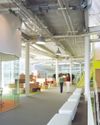
Metropolis Magazine
No New Buildings
The energy already embodied in the built environment is a precious unnatural resource. It’s time to start treating it like one.
7 mins
November/December 2019
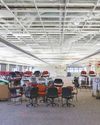
Metropolis Magazine
The Circular Office
Major manufacturers are exploring every avenue to close the loop on workplace furniture.
1 mins
November/December 2019

Metropolis Magazine
Signs of Life
Designers, curators, and entrepreneurs are scrambling to make sense of motherhood in a culture that’s often hostile to it.
7 mins
November/December 2019
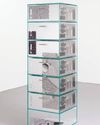
Metropolis Magazine
Interspecies Ethic
In probing the relationship between humans and nature, two major exhibitions question the very foundations of design practice.
6 mins
November/December 2019
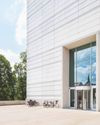
Metropolis Magazine
Building on Brand
The Bauhaus turned 100 this year, and a crop of museum buildings sprang up for the celebration.
8 mins
November/December 2019

Metropolis Magazine
Building for Tomorrow, Today
Radical change in the building industry is desperately needed. And it cannot happen without the building trades.
6 mins
November/December 2019

Metropolis Magazine
Strength from Within
Maggie’s Centres, the service-focused cancer support network, eschews clinical design to arm patients in their fight for life.
5 mins
October 2019

Metropolis Magazine
Next-Level Living
The availability of attractive, hospitality-grade products on the market means everyday consumers can live the high life at home.
1 mins
October 2019
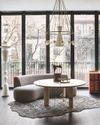
Metropolis Magazine
Mi Casa, Su Casa
Casa Perfect creates a memorable shopping experience in lavish private homes.
1 min
October 2019

Metropolis Magazine
Enter The Culinarium
AvroKO imagines the future of residential amenities—where convenience, comfort, and sustainability meet.
5 mins
October 2019
Translate
Change font size

